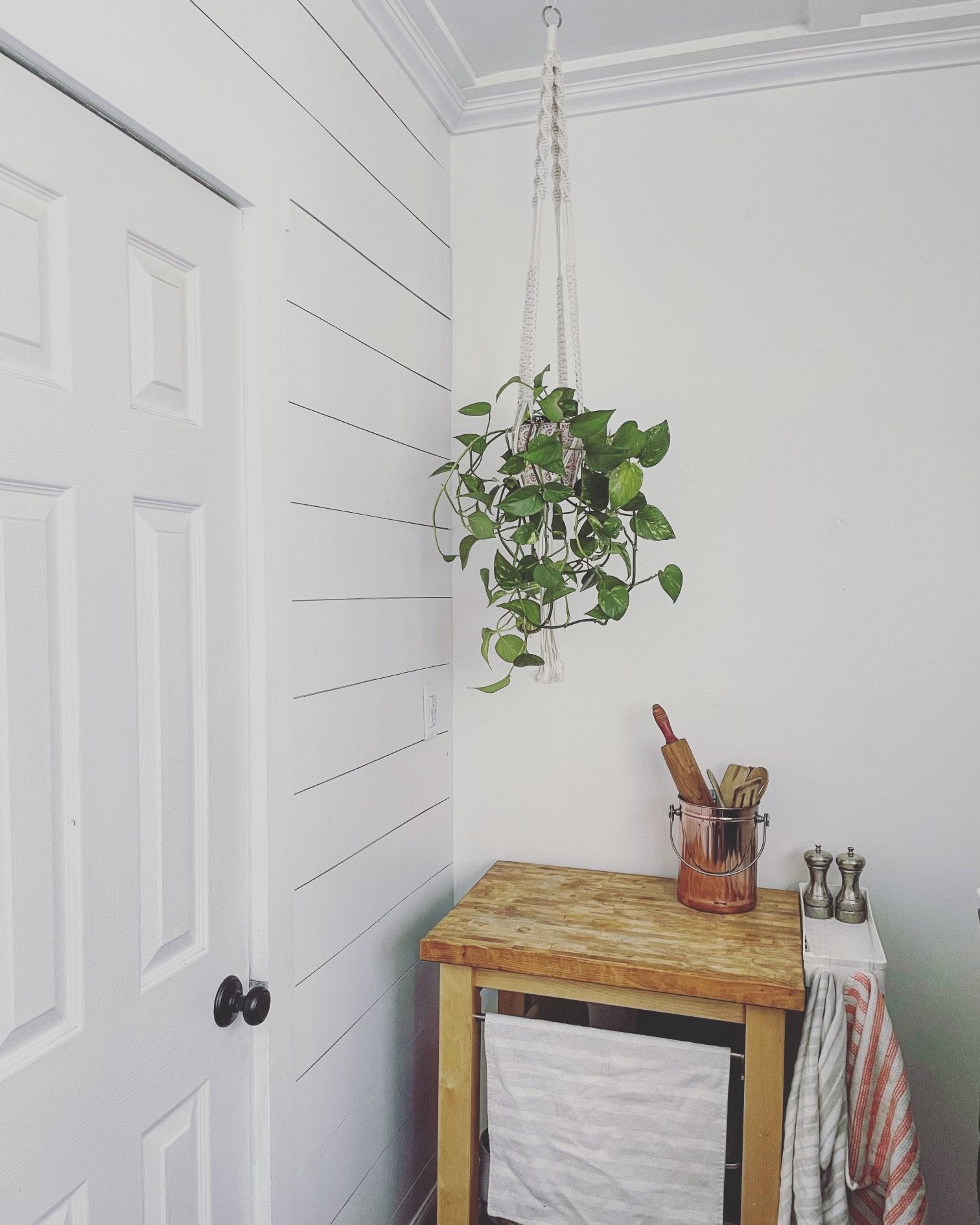If you’ve decided you’re ready to propagate your household plants but need to learn a little more, then you’re in the right place. Before you can truly get started you need to be able to identify the plant you want to multiply, so you can settle on the perfect propagation technique.
Pictured: "The Botonist" Propagation Station
There are 3 main types and we outline them all below...
Dividing
Works for Peace Lily, Fern, Calathea
How it’s done:
Remove your plant from its container. Use both hands to gently massage the roots, encouraging the plant to come apart. Most of the time your plant will divide easily, but for those occasional stubborn roots use a sharp knife to cut the plant in half. Using a pot with ample drainage [‘The Concrete Jungle’ //‘The Basin’] take the two halves and plant them into moist potting soil in indirect light. The roots need extra loving because of the separation, so supplying ample water at the start will be crucial in their recovery.
Rooting
Works for Succulents like Hens and Chicks, Echeveria, Haworthia
How it’s done:
There are two ways you can sprout roots here. If the plant has a stem, you can cut a piece and place it into a clear vessel filled with water. Or you can snip off a piece of a healthy leaf and place it on top of dirt which you’ll need to water more often. Eventually the stem or the leaf will grow roots and you’ll be ready to pot.
HINT: Succulents are healthy when they are plump.
Cutting
Hold onto your seats because within the cutting category there are 3 types of techniques, so follow along closely as we unpack them.
STEM CUT
Works for Spider Plants, Pothos, Wandering Jew
This process is used on plants with aerial roots, or nodes which can be found under every leaf. Identify a healthy growth and cut an inch below the node. When propagating it in your clear vessel make sure the node is touching the water, and once the roots get to be around 4-6 inches they’re ready for a pot.
TIP CUT
Works for Sansevieria (Snake Plant), Ficus elastica (Rubber Plant), Pilea cadierea (Aluminum Plant)
When you look at your plant is it more like a tree than a cascading waterfall of leaves? Then tip cut is your propagation method. Here you’ll want to cut from a healthy parent plant at a 45-degree angle with a sharp, sterile cutting tool. The cutting should include the plant tip and a healthy portion of the stem. Place the cutting into your clear vessel and wait until the roots get to be about 4 inches before you put the cutting into a planter.
LEAF CUT
Works for Peperomia, Begonia Rex, Plectranthus (Swedish Ivy)
Lots of plants with soft, fleshy bits are able to reproduce themselves from their leaves alone. How cool is that?! So for this method you’ll need to cut anywhere on the leaf that’s green at a 45-degree angle, and put it directly into your clear vessel with water. The roots will be fragile at first and could possibly fall off, so handle with care. After about 2 weeks or so you’ll not only see roots, but also a new leaf forming. These new plantlets around the stem will be used to pot, eventually discarding the old leaf you cut a few weeks back.
There you have it. Now you know all there is to know about dividing and rooting and cutting based on your plant type. Take this info and head over HERE where we give a full snapshot of what else you’ll need to get started with propagation.
Go forth and propagate with confidence plant people.
Leave a comment (all fields required)
Comments will be approved before showing up.



